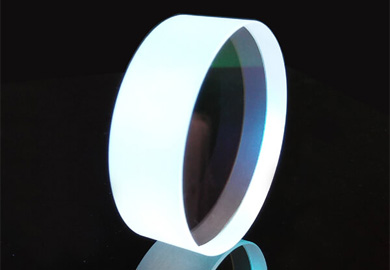Optical Spherical Lens
(2022年08月02日)https://www.ecoptik.net/products/optical-spherical-lens/
The "spherical curvature" of a spherical lens is constant, meaning that the front and back surfaces lenses are part of the spherical surface, respectively. Each surface may be convex (protruding from the lens), concave (concave into the lens), or "flat" (flat). The line between the spherical centre points on the front and rear surfaces lens is called the optical axis of the lens. In almost all cases, the optical axis of the lens passes through the physical centre of the lens. Ecoptik (also known as BRD Optical) can provide different kinds of spherical lenses like plano concave lens, plano convex lens, achromatic lens.
The lens can be widely used in security, vehicle, digital camera, laser, optical instruments and other fields. With the continuous development of the market, lens technology is more and more widely used. Ecoptik has obtained the high technology of producing custom optical lenses. If any issues, please contact us.
The radius of curvature of the aspheric lens changes with the central axis, which has a better radius of curvature and can maintain good aberration correction. The aspheric lens is used to replace the spherical lens. The most significant advantage is that it can correct the spherical aberration caused by the spherical lens in the collimation and focusing system. By adjusting the surface constant and the aspheric coefficient, the aspheric lens can eliminate the spherical aberration to the greatest extent. The aspheric lens basically eliminates the spherical aberration caused by the spherical lens. At present, the main processes of the aspheric lens are: precision glass molding, precision polishing molding, hybrid molding,
Types Of Spherical Lens
Plano Concave Lens
Plano Concave Lens
Plano Convex L Lens
Plano Convex L Lens
Achromatic Cemented Lens
Achromatic Cemented Lens
Meniscus Lens
Meniscus Lens
Double Concave Lens
Double Concave Lens
Double Convex Lens
Double Convex Lens
Half Ball Lens
Half Ball Lens
Custom Hyper Hemisphere Lens
Custom Hyper Hemisphere Lens
Optical Cylindrical Lens
Optical Dome
Optical Mirror
Optical Prism
Optical Spherical Lens
Reticles
Infrared Optics
Filter
Optical Windows
Optical Spherical Lenses Applications
A lens is a device that can converge or disperse light, and the resulting image can be real or virtual. It is widely used in various fields such as security, car wear, digital camera, laser, optical instrument and so on. Various common colorless optical glasses including fused silica, calcium fluoride, magnesium fluoride, silicon, germanium, zinc selenide and other materials; and plano-convex lenses, bi-convex lenses, plano-concave lenses, bi-concave lenses, super Hemispherical lens, small spherical lens, meniscus lens, cemented lens, etc. The lens is made according to the law of light refraction. A lens is an optical element made of transparent materials (such as glass, crystal, etc.). The lens is a refracting lens, and its refractive surface is a transparent body with two spherical surfaces (part of the spherical surface) or one spherical surface (part of the spherical surface) and one plane. The images it forms are real and virtual. Lenses can generally be divided into two categories: convex lenses and concave lenses. The center part is thicker than the edge part is called a convex lens, there are three kinds of biconvex, plano-convex, and concave-convex; the center part is thinner than the edge part is called a concave lens, and there are three kinds of bi-concave, plano-concave, and convex-concave.
Optical Spherical Lens FAQs
How To Detect The Fringes Of A LensHow To Detect The Fringes Of A Lens
Detected by Zygo interferometer, currently we can reach λ/20.
Do Your Materials Comply With Rohs Standards?Do Your Materials Comply With Rohs Standards?
Yes, we select materials strictly in accordance with customer requirements and RoHS regulations.
How To Manage Product Quality?How To Manage Product Quality?
We have passed the ISO9001:2015 quality management system certification, and have a complete quality management system. The first is the inspection of the selected materials, the inspection of the material's transmittance, refractive index, stripes, bubbles, etc., In fact, the inspection in the processing process , Including the size of the tool, the size of the processed parts, the radius, the scratch /dig, the surface fringe, etc.; the final inspection is the final inspection, which mainly focuses on the size, sfringe, radius, focal length, surface quality, coating, etc.
Ecoptik (also known as BRD Optical),as a custom optic manufacturer of spherical lens manufacturing has close cooperation with CIOMP and Changchun University of Science and Technology to provide you with more professional design services.

- このできごとのURL:


コメント